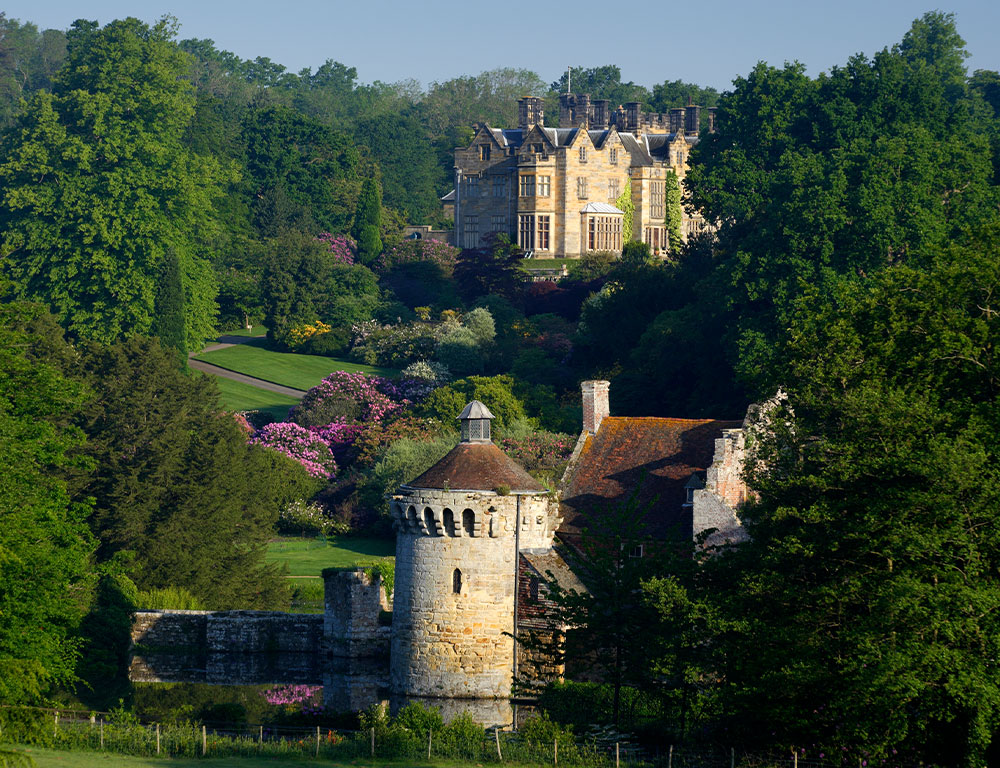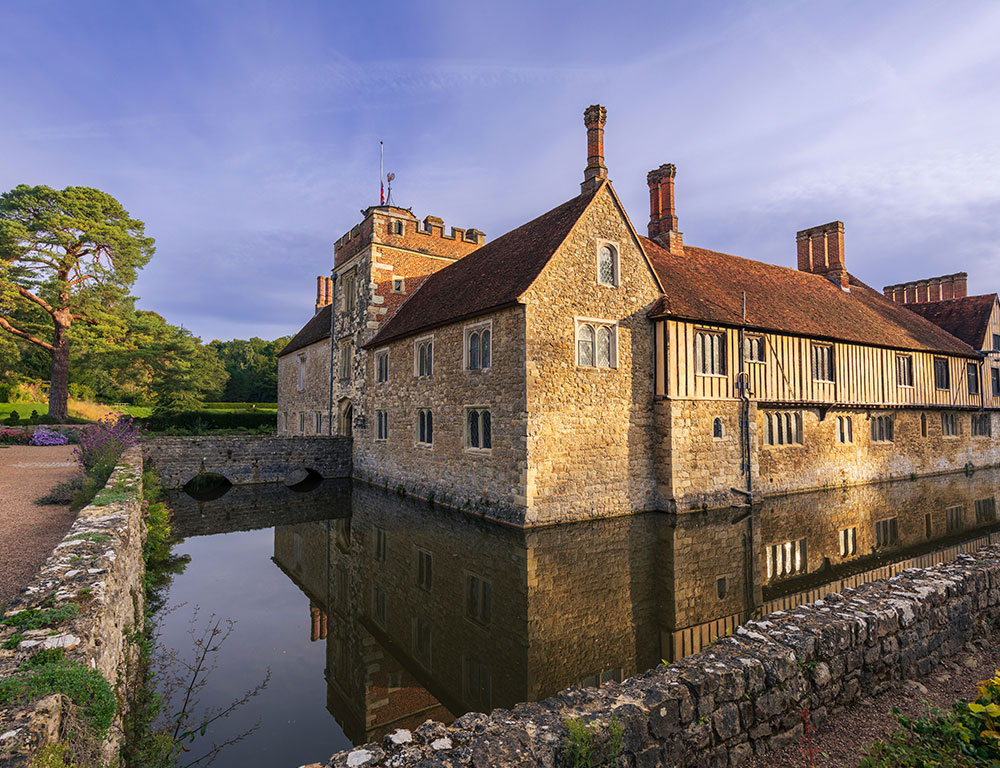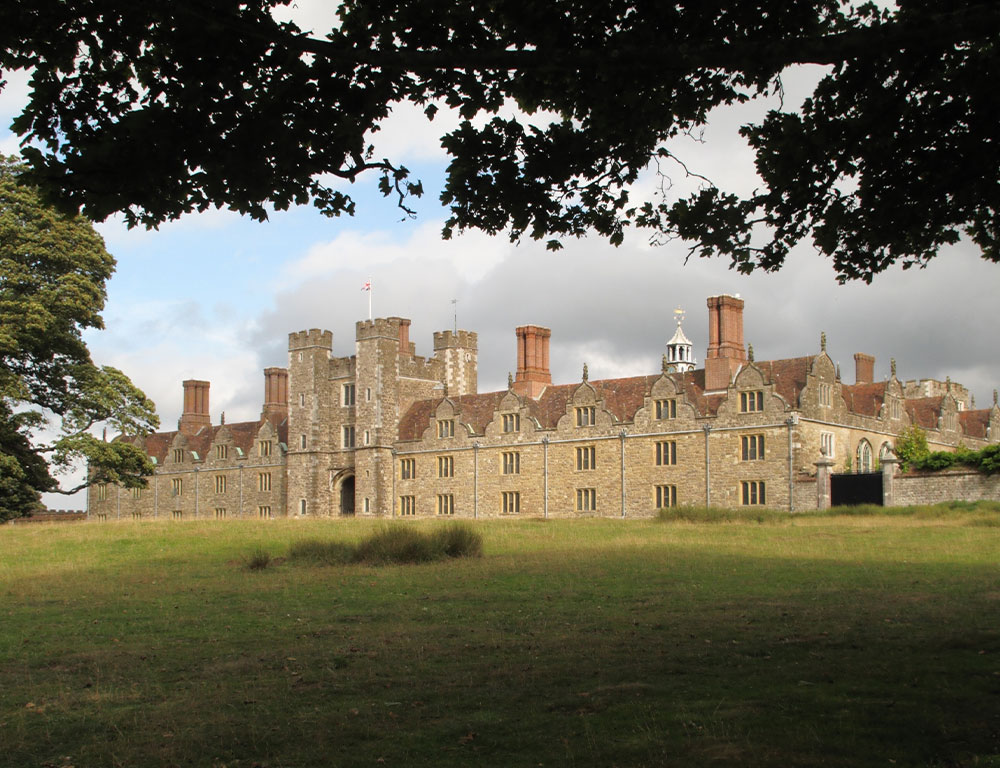Whether you’re a history buff, a nature enthusiast, or simply seeking a delightful day out, Kent’s National Trust gems promise an unforgettable experience. This guide will unveil the best of the best, taking you on a journey through time and nature’s wonders.
Scotney Castle, Lamberhurst
Although the earliest records for Scotney go back to 1137; it was not until 1378 that the Old Castle was built in response to the attacks and raids that were being perpetrated by the French against the local population. The medieval castle fell into decline and today all that remains of the original building is the south tower.
Acres of seemingly wild and uncultivated mature gardens tumble down the hillside to the lily-strewn moat, where the ruins of the Old Castle sit serenely surrounded by water among tranquil woodland glades.
In the 16th century, an Elizabethan Manor house was built by the Darrell family, which integrated the sole remaining tower.
During the reign of Queen Elizabeth 1st, when the Church was moving toward Protestantism, the Darrell family took a huge risk by concealing Catholic priest Father Richard Blount, for seven years in a secret chamber. Father Blount survived in hiding and eventually died in London in May 1683. Ultimately, the manor house fell into decay and was abandoned. In 1778 Edward Hussey purchased Scotney and commissioned architect Anthony Salvin, to design and build a new house using the sandstone that was available in the grounds. The family remained in residence until 1970 when Christopher Hussey left the estate to the National Trust.
Some of the rooms in the house were opened to the public for the first time in 2007, these rooms have been kept more or less untouched, each one containing personal possessions belonging to the Hussey family.
Ightham Mote
Ightham Mote, a medieval manor house nestled in the heart of the Kent countryside, stands as a living testament to centuries of history and architectural evolution. Surrounded by a picturesque moat and expansive gardens, this National Trust property captivates visitors with its timber-framed structure, Tudor features, and tranquil surroundings. A walk through its hallowed halls reveals a captivating blend of medieval, Tudor, and Stuart architecture, showcasing the diverse history that has shaped Ightham Mote over the years. From the charming courtyard to the inviting great hall, each corner of the manor invites exploration and reflection on the passage of time. Visitors can also wander through the enchanting gardens, characterized by vibrant blooms, topiary, and secret pathways, creating an atmosphere of timeless beauty. Ightham Mote stands as a well-preserved treasure, offering a glimpse into England’s rich historical tapestry.
Knole House, Sevenoaks
Knole House stands as a magnificent testament to centuries of history and grandeur. This historic estate, dating back to the 15th century, boasts an awe-inspiring Tudor mansion surrounded by a vast and enchanting deer park. As visitors explore the sprawling grounds, they are greeted by the majestic sight of roaming deer, adding a touch of wildlife splendor to the rich tapestry of Knole’s story.
The park, with its ancient oaks and meandering pathways, invites guests to immerse themselves in the timeless beauty of nature while experiencing the grandeur of one of England’s most storied estates. Knole House, with its fascinating history and the graceful presence of its resident deer, offers a captivating journey through the past and a serene retreat into the heart of Kent’s natural beauty.
Chartwell
Chartwell stands as a living testament to the life and legacy of Sir Winston Churchill. This historic estate, once the beloved home of the iconic British statesman, offers visitors a captivating journey through time. Surrounded by picturesque gardens and sprawling grounds, Chartwell boasts not only the charm of its red-brick façade but also the personal touches that reveal Churchill’s passions and pursuits. Wander through the carefully preserved rooms where the leader of wartime Britain found solace and inspiration. The terraced garden, with its vibrant blooms and breathtaking views, provides a serene backdrop for reflection. A visit to Chartwell is a profound exploration of history, offering insights into the private world of one of the 20th century’s most influential figures.
Sissinghurst Estate
Le chateau at Sissinghurst, as it was once nicknamed, is not a castle at all it is a network of marvellous squat Tudor buildings. The Sissinghurst manor house is at least 300 years old nestled in the Weald of Kent and built on a former pig farm dating from Saxon times. The tower in the midst of the garden is built in a style reminiscent of a castle’s fortifications. French prisoners were kept in desperate conditions in the ‘castle’ during the Seven Years War which is how it earned the name ‘le chateau’, and it stuck as a translation into the English. Today, you can climb the tower and admire the world-famous gardens.



























